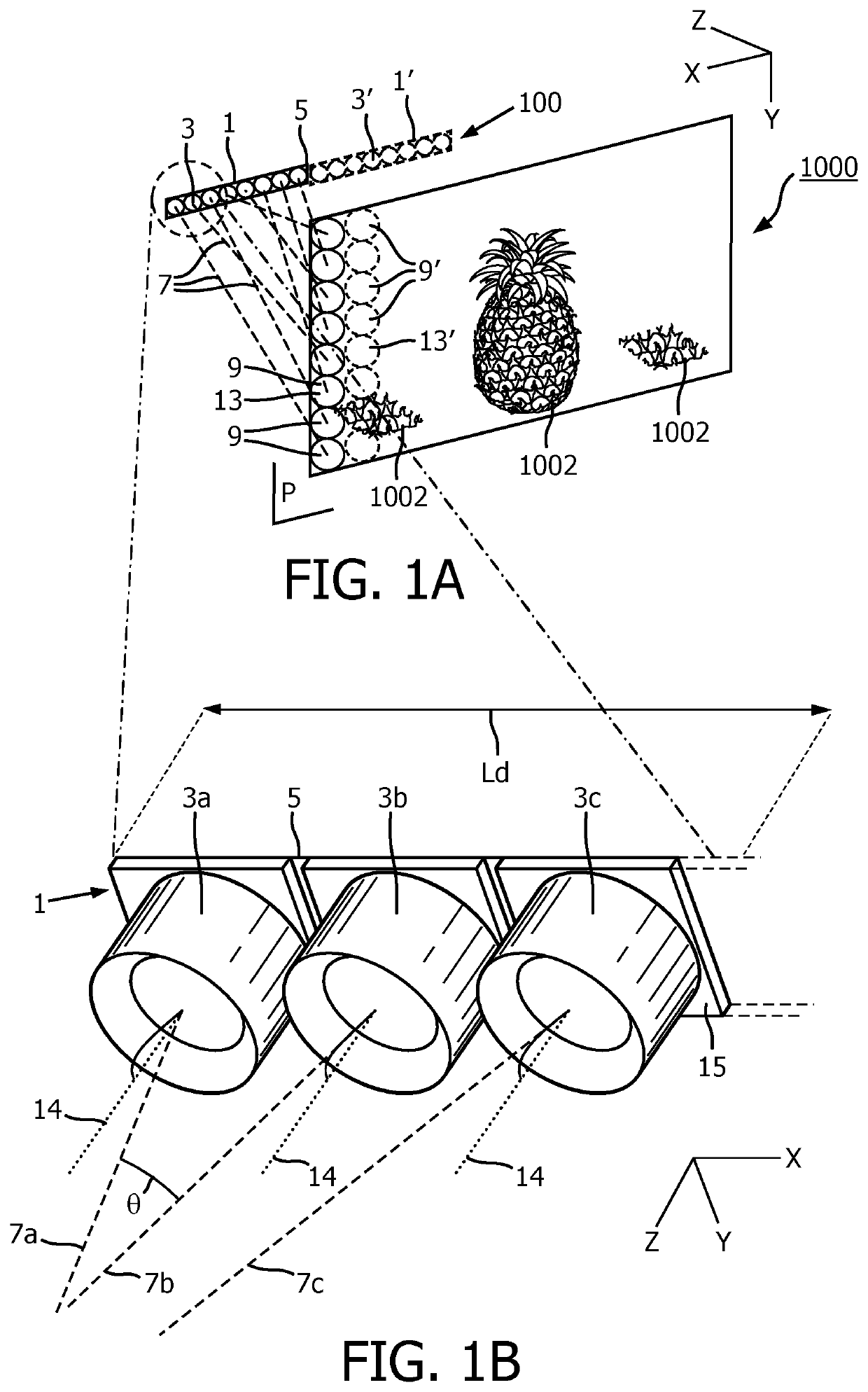Lighting system
- Summary
- Abstract
- Description
- Claims
- Application Information
AI Technical Summary
Benefits of technology
Problems solved by technology
Method used
Image
Examples
Embodiment Construction
indow 1000 provided with displayed articles 1002 for explaining the principle of the invention. Thereto it shows a first, lighting device 1 comprising a linear row of eight lighting units 3 mounted and extending only in a first direction X on an elongated carrier 5. Alternatively, the lighting device, the carrier and / or the row of lighting devices might have a slightly curved shape, for example over a curvature angle of at the most 30°. Each lighting unit 3 being mounted with a respective, fixed, unique, pre-determined orientation as indicated by a respective optical axis 7. Said first lighting device 1 being configured to directly project on a target area 11, i.e. plane P in which the displayed articles 1002 are located, a first row of light patches 9, said plane P extending in said first direction X and in a second direction Y transverse, i.e. Δ≈90° however slightly deviations are possible, to said first direction (when directions XYZ are according to an orthogonal Cartesian Coord...
PUM
 Login to View More
Login to View More Abstract
Description
Claims
Application Information
 Login to View More
Login to View More - R&D
- Intellectual Property
- Life Sciences
- Materials
- Tech Scout
- Unparalleled Data Quality
- Higher Quality Content
- 60% Fewer Hallucinations
Browse by: Latest US Patents, China's latest patents, Technical Efficacy Thesaurus, Application Domain, Technology Topic, Popular Technical Reports.
© 2025 PatSnap. All rights reserved.Legal|Privacy policy|Modern Slavery Act Transparency Statement|Sitemap|About US| Contact US: help@patsnap.com



